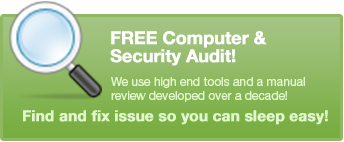In 2021, managed services in the IT niche rely on a complex infrastructure of advanced tools and systems. In other words, these professionals can’t just get by with a notepad and pen. Instead, clients choose their MSP based on the number of advanced tools available. Therefore, managed service software is any piece of software that MSPs use to provide reliable services and keep all clients happy.
These tools can offer various features, including:
- Supply chain management
- Utilities
- B2B integration
- Information services
- Media management
As the MSP niche has grown, so too has the available software. But, of course, the software has also had to keep up with changing demand from clients. For example, cloud services weren’t crucial to clients many years ago. Now, they’re almost essential as more businesses rely on the cloud to some extent.
Elsewhere, automation is another feature that has grown in popularity. Utilizing machine learning and artificial intelligence algorithms, specific tasks can be performed automatically, and this reduces the workload for MSPs. In turn, their costs decrease, and this is passed down to clients.
Naturally, the rise of managed service software has also led to some businesses removing the middleman. Rather than going through an MSP, they invest in the software directly. However, this doesn’t resolve all problems. For one thing, you don’t have access to experts when something goes wrong (as you do with MSPs). Also, you might get all information presented neatly, but this is worthless if you don’t know how to interpret or act on the information.
Key Features of MSP Software
Whether helping a business directly or an MSP, software in this niche has some key features.
Remote Monitoring
With a cloud-based design, it’s possible to keep an eye on several clients at once. These days, the biggest MSPs have dozens of clients, and remote monitoring makes this possible. With alerts, the MSP knows instantly when something needs attention for a client.
Automation
As mentioned earlier in the guide, automation is another critical element of MSP software. If businesses aren’t utilizing automation, they’re only going to fall behind the competition (since they’re inevitably using this technology). These days, automation can help by completing mundane tasks and allowing workers to focus on more important jobs. As well as communicating with people, automation can apply patches, updates and perform other tasks.
Help Desk
When MSPs use software, they need some sort of help desk system so that clients can alert them to problems. Usually implemented in a ticket system, this allows MSPs to manage requests from clients and deal with them in order of priority. In turn, this means happier customers and an enjoyable experience for all.
Mobile Features
In recent years, software of this nature has also needed mobile capabilities. With mobile features, MSPs get real-time data, communication tools, and additional features for such devices.
Account Management
As mentioned previously, MSPs have dozens of clients, so a form of account management is also appreciated. Here, they can track the IT systems of all clients and present all pertinent information clearly. When talking to clients, workers in the MSP get all the information they need about the client instead of asking the same questions every time.
After this, MSPs also look for advanced reporting and asset management in managed service tools. If you’re currently choosing between software solutions, think about your needs, budget, and the service you provide to clients. So long as you keep clients in mind when making decisions, you won’t go far wrong.
There you have it; managed service software describes the tools and platforms used by MSPs to provide a positive experience to all clients!



